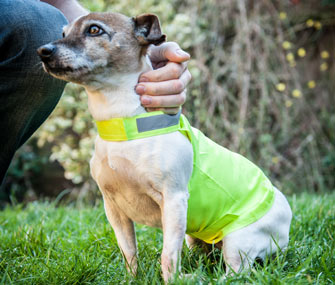Why Does My Pet… Get So Lumpy as He Ages?
Published on September 29, 2016
Skip To

But first, a quick primer on the semantics of superficial lumps and bumps: Veterinarians commonly refer to these as “masses,” “tumors” or “growths,” regardless of their provenance or potential cancerous-ness.
No matter what we call them, one thing is clear: Almost all kinds of lumps and bumps appear much more often on older pets –– dogs, mostly. And lumpy-bumpy skin tumors are so common, they’re listed among the top 10 reasons people take their dogs to their veterinarians.
Many Lumps Are Benign
Fortunately for cats, many common lumps are temporary. For example, cats often get bite wounds and abscesses sustained while carousing the neighborhood or simply defending their territory from interlopers. Still, lumps on cats shouldn’t be ignored.Though dogs can get abscesses, too, for them (and some cats), the range of possibilities tends to be a bit broader. Benign (non-cancerous) superficial masses may include warts (papillomas) and wart-like masses, cystic tumors (fluid-filled masses), skin tags, sebaceous gland tumors (rarely, these can be malignant, or cancerous) and others.
Benign lipomas (or fatty tumors) are so ubiquitous among dogs (and not so much in cats) they fall into a category all their own. They arise from fat cells beneath the skin and typically present themselves as roughly circular masses. They can sometimes grow quickly –– and occasionally to impressive proportions! Most, however, stay within the smaller range of three inches in diameter or less.
Occasionally, lipomas can infiltrate the tissues around them and become difficult to surgically remove. Another infiltrative variation on these tumors, liposarcomas, are malignant but relatively rare.
Other Bumps Are More Worrisome
Unfortunately, cats and dogs aren’t exempt from cancerous skin tumors. Mast cell tumors, soft tissue sarcomas, squamous cell carcinomas and basal cell carcinomas (a common skin mass of older cats) are among the most seriously problematic lumps and bumps. In cats, for example, a relatively uncommon reaction can occur at vaccine injection sites, leading to a malignant sarcoma. It’s usually best to treat malignant growths as soon as possible.Why are older pets more likely to grow these lumps and bumps? This is the part we don’t fully understand. It’s clear, however, that the cells of older animals may lose some of their ability to regulate themselves properly, often leading to abnormal tissue growth.
The trouble is, it’s not easy to distinguish a benign lump from a cancerous one by outer appearances alone. In most cases, a fine needle aspirate or biopsy can help identify the type of growth. So if you see a lump or bump on any pet, older or otherwise, head over to your veterinarian. Though likely to be benign, this is the best way to be sure you’re not ignoring something that may require attention.
More on Vetstreet:
- Stinky Dog? 6 Common Culprits
- Top 10 Warning Signs of Cancer
- Why Does My Pet… Pace at Night?
- 10 Most Overlooked Aches and Pains in Cats
- Sometimes Cancer in Pets Really Is Just Bad Luck





